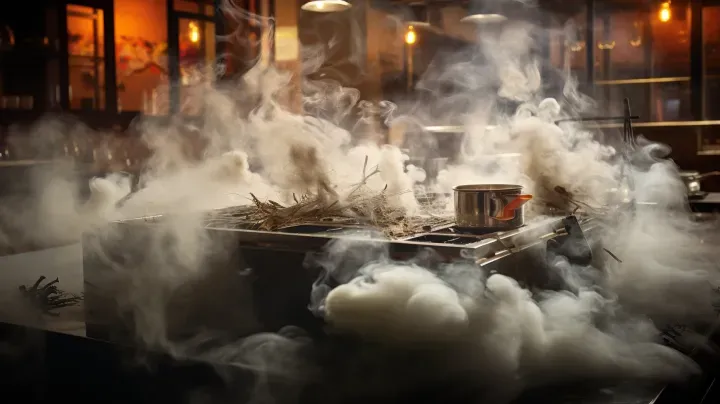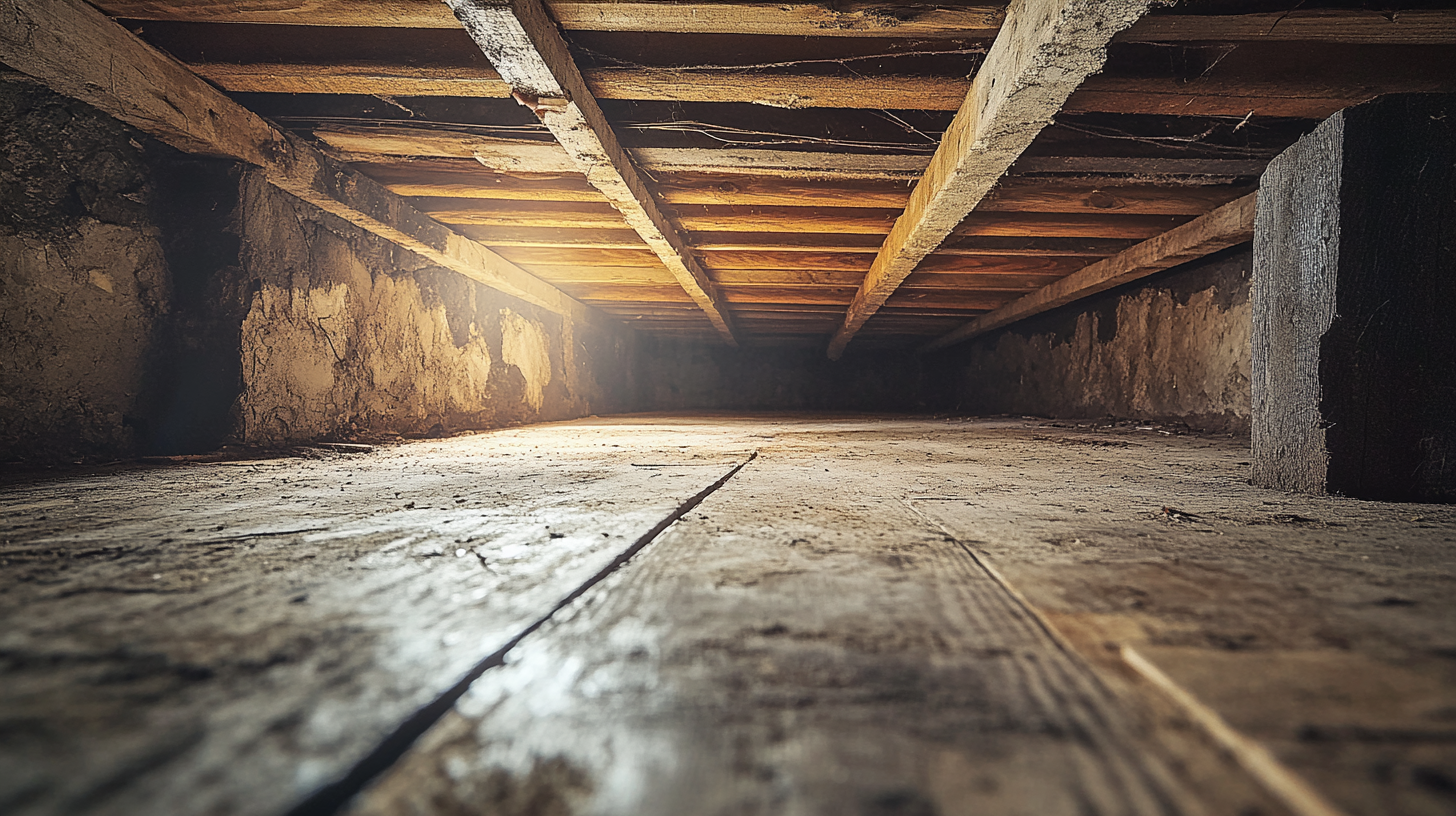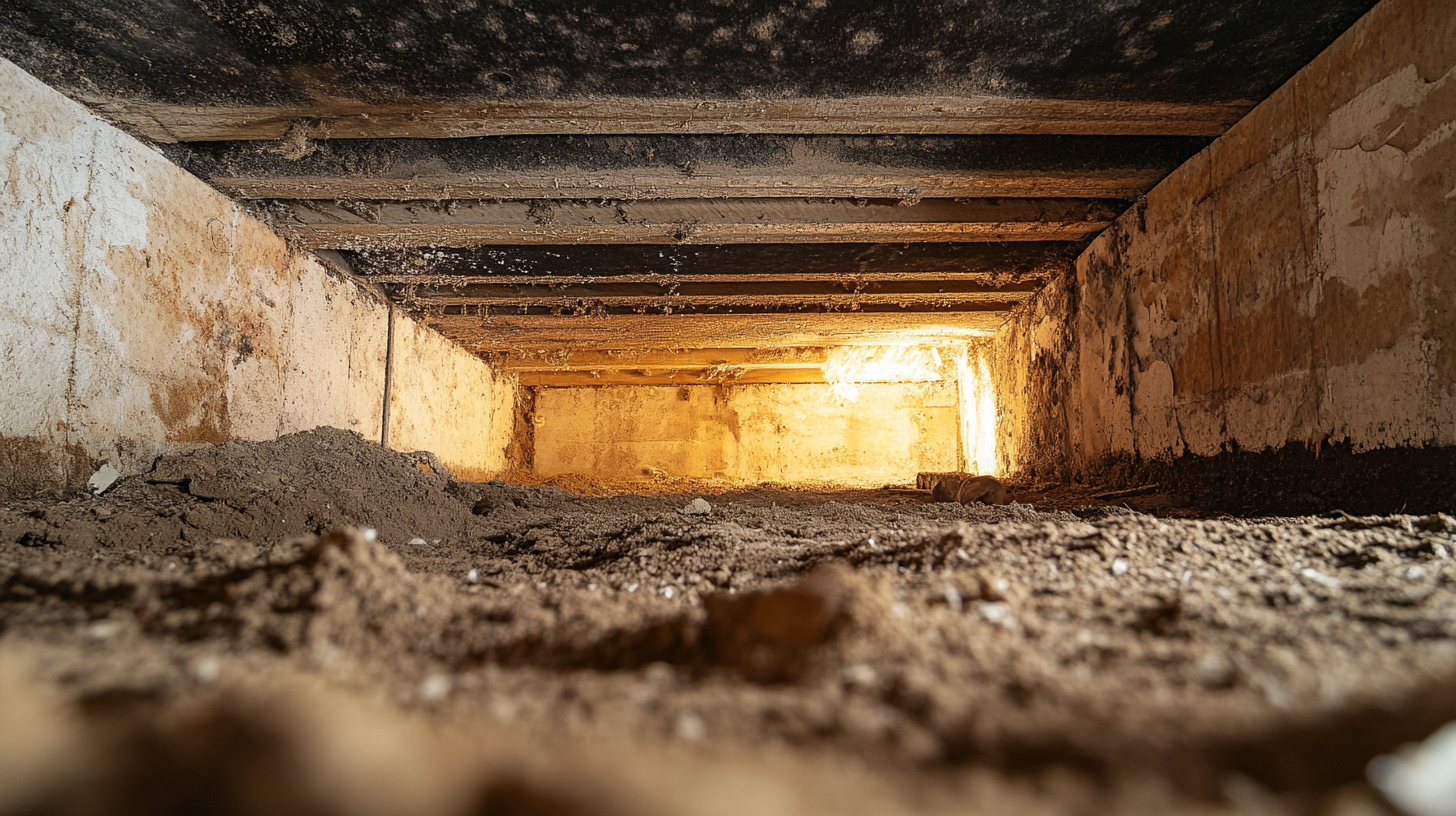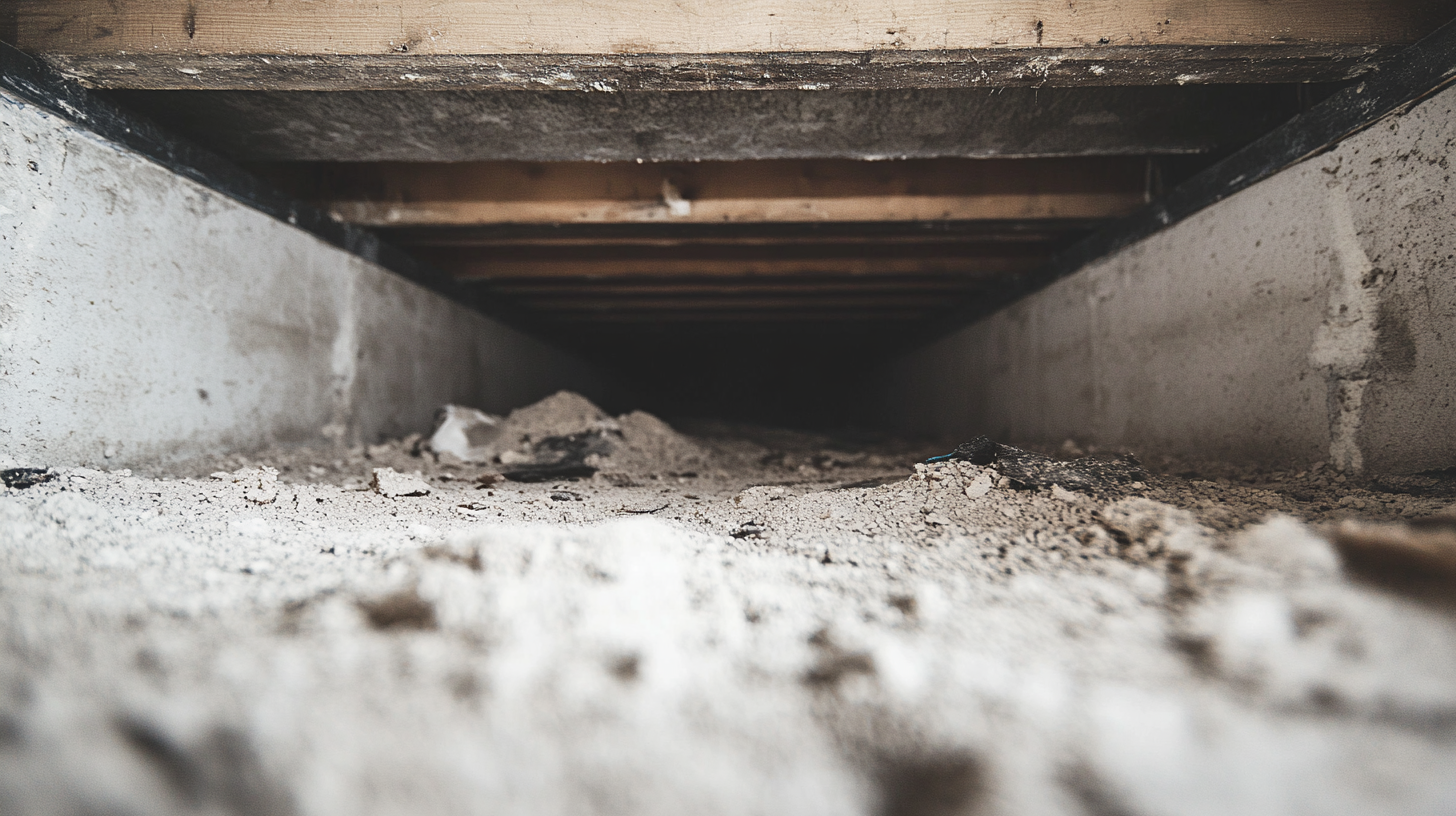Smoke Damage in Kitchens

The kitchen, the heart of the home, is also a common site for smoke damage. Understanding the typical causes of smoke damage in this vital space is crucial for prevention and effective response. This blog aims to explore the various factors that contribute to smoke damage in kitchens and emphasizes the importance of a prompt and effective response to minimize long-term consequences.
Smoke damage in kitchens can arise from a range of everyday activities, often turning ordinary cooking experiences into potential hazards. From overheated oils to unattended stovetops, the causes are numerous, yet each carries the risk of leaving behind soot, odors, and residues that can compromise both the safety and aesthetics of your kitchen.
Addressing these incidents swiftly and efficiently is not just about maintaining the cleanliness and functionality of your kitchen; it's about ensuring the health and safety of your home environment. Smoke can permeate far beyond the kitchen, affecting air quality and leaving lingering odors that are challenging to eliminate.
In this blog, we will delve into the common causes of smoke damage in kitchens, such as cooking mishaps, appliance malfunctions, and electrical issues. We will also provide insights into the immediate steps that should be taken in the event of smoke damage. These steps are designed to mitigate the impact, safeguard your kitchen, and maintain the overall well-being of your home.
Join us as we explore the intricacies of kitchen smoke damage, offering practical advice and proactive measures to help you effectively manage these incidents and maintain the safety and comfort of your kitchen space.
Understanding Smoke Damage in the Kitchen
The kitchen, a hub of culinary activity, is also a common place for various types of smoke damage. Understanding the nature of this damage is crucial for effective cleaning and maintenance. This section explores the different types of smoke damage typically found in kitchens and discusses both the immediate and long-term effects on surfaces and appliances.
Types of Smoke Damage in Kitchens
Smoke damage in the kitchen can vary based on the source and nature of the fire or smoke. Here’s an overview of the common types:
- Protein Smoke: Often resulting from burning food, protein smoke leaves a yellowish-brown residue and a strong, unpleasant odor. It can be hard to see but adheres strongly to surfaces.
- Greasy Smoke: Commonly produced from cooking oils or fats, this type of smoke leaves a sticky, greasy residue that can be challenging to clean and can attract further dirt.
- Sooty Smoke: Resulting from open flames, sooty smoke creates a black, powdery residue that can coat surfaces and appliances, leading to discoloration and corrosion.
Each type of smoke damage requires specific cleaning approaches to effectively remove residues and odors without damaging kitchen surfaces and appliances.
Immediate and Long-Term Effects
Understanding both the immediate and potential long-term effects of smoke damage is essential for proper kitchen maintenance:
Immediate Visible Effects:
- Discoloration of walls, ceilings, and appliances.
- Visible soot and grease deposits on surfaces.
- Strong, often unpleasant odors that permeate the kitchen and adjacent areas.
Potential Long-Term Damage:
- If not properly cleaned, greasy and protein residues can permanently stain and damage surfaces.
- Soot particles can cause corrosion over time, especially on metal appliances and fixtures.
- Lingering odors can become absorbed into porous materials, making them difficult to eliminate later.
- In some cases, prolonged exposure to smoke residues can pose health risks, particularly respiratory issues.
Prompt and effective response is key to minimizing both the immediate and long-term effects of smoke damage in the kitchen. Regular cleaning, proper ventilation, and, in severe cases, professional restoration services can help maintain the integrity and safety of your kitchen space.
Initial Steps to Take After Smoke Damage
When your kitchen suffers from smoke damage, the immediate steps you take can significantly impact the effectiveness of the cleanup process and the safety of your environment. This section outlines the crucial initial actions to ensure safety and prevent further damage.
Safety First
Before diving into the cleanup process, prioritizing safety is essential. Here are key safety measures to consider:
Ensuring Electrical Safety Before Cleanup:
- Turn off the main power supply to avoid electrical hazards, especially if appliances or outlets have been exposed to smoke or water.
- Have an electrician inspect your kitchen’s electrical system for any damage before restoring power.
Wearing Appropriate Protective Gear:
- Equip yourself with protective gear such as gloves, masks or respirators, and safety goggles to protect against inhaling soot particles or coming into contact with harmful substances.
- Consider wearing long-sleeved clothing to protect your skin from direct exposure to contaminants.
Ventilation and Containment
Proper ventilation and containment are crucial in managing smoke and soot in your kitchen. Here are methods to effectively handle this:
Methods to Ventilate the Kitchen:
- Open windows and doors to allow fresh air to circulate, which helps in reducing smoke odor and dissipating airborne soot particles.
- Use fans to direct the airflow outward, which aids in removing contaminated air from the kitchen.
Containing the Spread of Smoke and Soot:
- Close doors or use plastic sheeting to seal off the affected kitchen area, preventing soot and smoke from spreading to other parts of the house.
- If using air conditioning or heating, change the filters to prevent the spread of soot particles through the HVAC system.
Taking these initial steps after smoke damage is critical in setting the stage for a safe and effective cleanup process. It helps in minimizing health risks and preventing further spread of damage in your home.
Cleaning and Restoring Surfaces
After experiencing smoke or soot damage, restoring the cleanliness and integrity of various surfaces in your home or building is crucial. This section provides detailed techniques for cleaning countertops and cabinetry, as well as walls and ceilings, using safe and effective cleaning agents.
Countertops and Cabinets
Different materials used in countertops and cabinetry require specific cleaning approaches to remove soot without causing damage. Here are techniques and safe cleaning agents:
Techniques for Cleaning Various Countertop Materials and Cabinetry:
- Laminate and Solid Surface Countertops: Use a mild detergent or a solution of warm water and dish soap. Avoid abrasive cleaners that can scratch the surface.
- Natural Stone Countertops (Granite, Marble): Clean with a pH-neutral stone cleaner or mild dish soap. Avoid acidic cleaners like vinegar, which can etch the stone.
- Wooden Cabinets: Use a wood cleaner or a mild soap solution. Avoid soaking the wood and promptly dry after cleaning to prevent warping.
Safe and Effective Cleaning Agents:
- Mild Detergent: Effective for most surfaces, it removes soot without harsh chemicals.
- Baking Soda Solution: Useful for light stains and odors. Mix with water to create a paste for scrubbing.
- Specialized Cleaners: For tougher stains, consider products specifically designed for soot and smoke residue removal.
Walls and Ceilings
Soot and smoke residue on walls and ceilings require careful cleaning to avoid further damage, especially on painted or tiled surfaces. Here are strategies for effective cleaning:
Strategies for Removing Soot and Smoke Residue:
- Painted Walls: Start with a dry cleaning sponge to gently lift soot. Follow with a mild detergent solution, being careful not to oversaturate the wall.
- Tiled Surfaces: Use a solution of warm water and mild detergent. For grout lines, a small brush can be effective in removing soot.
- Testing Cleaning Solutions: Always test your cleaning solution on a small, inconspicuous area first to ensure it does not damage or discolor the surface.
- Gentle Cleaning Techniques: Use soft cloths or sponges and avoid abrasive tools that can damage the surface finish.
Cleaning and restoring surfaces after smoke or soot damage requires careful consideration of the materials affected and the use of appropriate cleaning agents. These steps will help in effectively removing soot and smoke residue, restoring the cleanliness and safety of your space.
Dealing with Appliances and Fixtures
In the aftermath of smoke damage, kitchen appliances and fixtures require special attention to ensure they are safely and effectively cleaned and restored. This section provides specific considerations for cleaning various appliances and tips for restoring fixtures like sinks, faucets, and light fixtures.
Cleaning Appliances
Kitchen appliances can accumulate smoke residue both on their surfaces and in hidden areas. Here are considerations and tips for cleaning them:
Specific Considerations for Cleaning Ovens, Stoves, Refrigerators, and Other Kitchen Appliances:
- Ovens and Stoves: Use a degreaser or oven cleaner for the interior. For gas stoves, ensure to clean the burners and grates thoroughly.
- Refrigerators: Clean both inside and out with a mild detergent. Pay attention to seals and handles where soot can accumulate.
- Microwaves and Small Appliances: Wipe down with a mild detergent solution. Check vents and filters for soot accumulation.
Tips for Addressing Hidden Smoke Damage in Appliances:
- Inspect and clean behind and underneath appliances where soot and smoke can settle.
- For appliances with filters (like range hoods), replace the filters if they've been exposed to smoke.
- Check electrical cords and connections for any smoke-related damage.
Restoring Fixtures
Fixtures such as sinks, faucets, and light fixtures also need care to restore them to their pre-damage condition. Here are methods for cleaning and restoring them:
Methods for Cleaning and Restoring Sinks, Faucets, and Light Fixtures:
- Sinks: Use a non-abrasive cleaner suitable for the sink’s material (stainless steel, porcelain, etc.). Pay attention to drains and disposals where odors can linger.
- Faucets: Clean with a mild detergent or a vinegar solution to remove soot and restore shine. Check aerators for clogging.
- Light Fixtures: Carefully dismantle and clean each part. For delicate fixtures, use a soft cloth dampened with a mild cleaner.
Additional Tips:
- Always test cleaning solutions on a small, inconspicuous area first.
- For electronic fixtures, ensure they are completely dry before reconnecting to power.
- Consider professional cleaning for high-value or intricate fixtures.
Dealing with appliances and fixtures after smoke damage requires careful cleaning and restoration efforts. These steps help ensure that your kitchen appliances and fixtures are not only clean but also safe and functional.
Smoke Odor Removal in Kitchens
Eliminating smoke odor from kitchens requires a strategic approach, as these odors can be stubborn and pervasive. This section explores both natural odor elimination techniques and advanced options, including professional services, to effectively remove smoke odors from your kitchen.
Natural Odor Elimination Techniques
Natural deodorizers can be effective in neutralizing and removing smoke odors without the use of harsh chemicals. Here are some methods:
Using Baking Soda, Vinegar, and Other Natural Deodorizers:
- Baking Soda: Sprinkle baking soda on surfaces and let it sit for several hours before wiping or vacuuming it off. It’s great for absorbing odors.
- Vinegar: White vinegar can neutralize odors. Wipe down surfaces with a vinegar solution, or leave bowls of vinegar in the kitchen overnight.
- Coffee Grounds: Place bowls of fresh coffee grounds around the kitchen. Coffee is a natural odor absorber and can help mask unpleasant smells.
Tips for Long-Term Odor Control:
- Keep a regular cleaning schedule to prevent odor buildup.
- Use natural air fresheners like lemon peels or essential oil diffusers to maintain a fresh-smelling kitchen.
- Ensure good ventilation, especially while cooking, to prevent future odor issues.
Advanced Odor Neutralization
For persistent or severe smoke odors, advanced techniques and professional services may be necessary. Here are some options:
Options for Professional Odor Removal Services:
- Professional services use industrial-grade equipment and techniques like ozone treatment or thermal fogging to eliminate deep-seated odors.
- Consider hiring a professional if natural methods are ineffective or if the odor is extensive.
Advanced Odor Neutralization Products:
- There are commercial odor neutralizers specifically designed for smoke odors. Look for products that are safe for use in kitchens and around food.
- Air purifiers with activated carbon filters can also be effective in continuously removing odors from the air.
Whether you opt for natural methods or professional services, effectively removing smoke odor from your kitchen enhances the overall environment, making it a more pleasant and healthy space.
FAQs
Contact Fast Response Cleaning & Restoration Today!
Fast Response Cleaning & Restoration will do everything we can to ensure your experience with us is excellent.
Request A FREE Estimate
Request A FREE Estimate Form
CHECKOUT RECENT POST



Have an Emergency? We're Here to Help!
When it comes to disaster cleanup, we are a seasoned veteran in the industry and have helped hundreds of property owners just like you.
Our disaster recovery teams are available 24-7 to quickly clean up and repair disasters of all types.
